Last Updated on October 28, 2024 by Ellen
We spent an afternoon wandering the ruins of Ancient Korinthos, Greece, which is a few kilometers from modern-day Corinth. Most of the visitors to the Greek ruins at Corinth go in large tour groups, but we went up the hill from the city on the public bus.
Not hurried in a tour group, we took our time around the site. I stood on chunks of ruined rock embedded in earth compacted by time and countless steps of other people who’ve lived and loved and died before me, and took in the view.
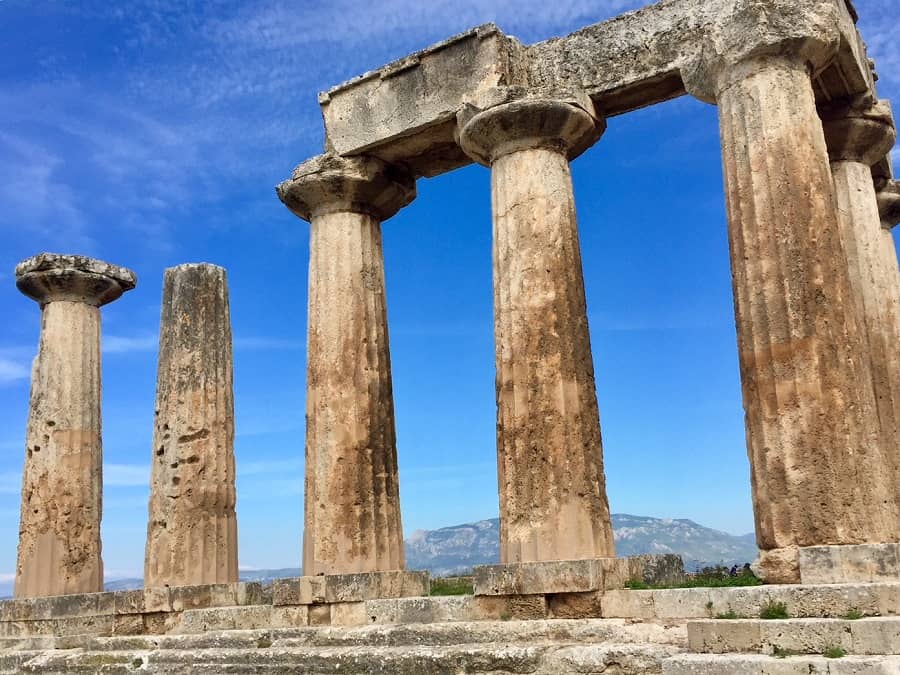
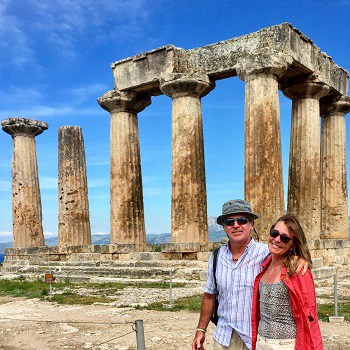
Greek ruins at Corinth
Basic background
Ancient Corinth has a museum with quite a story about how thieves beat a night guard in 1990 and plundered priceless statues. Most of the art was later discovered in Miami, Florida, and eventually returned.
These monuments made for the gods used to shine in the sun as tributes around a city with soaring temples as peace offerings against calamity. Today large statues and small sculptures are in the museum and guarded by people who hold modern monotheistic beliefs about how the Universe works.
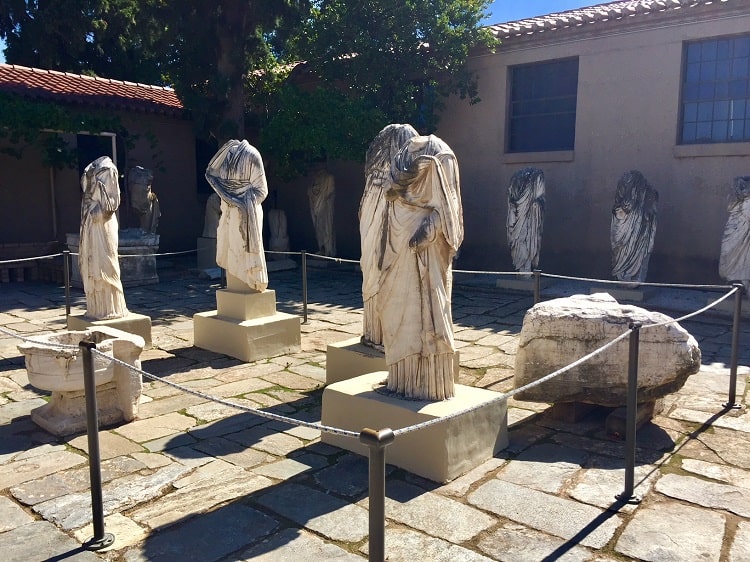
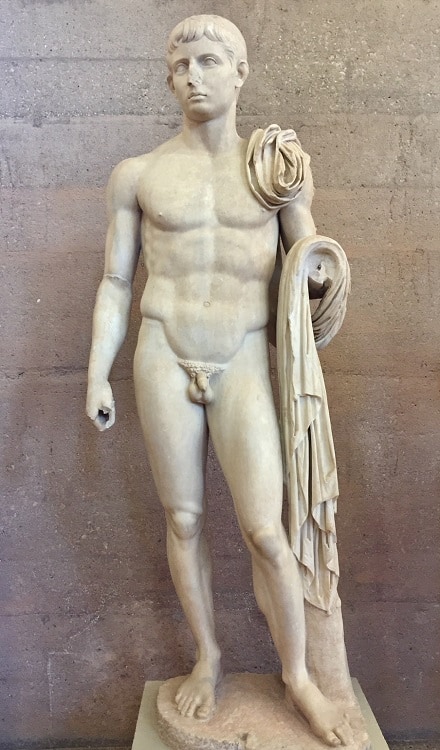
The grounds of Ancient Korinthos features the ruins of shops, apartments, and towers for pagan gods. Visitor maps highlight the places where roads, wells, and public baths once were arteries and veins to the city.
I stood where people lived their lives, and loved and died, over thousands of years. Those ancients had gods for everything: hunting and harvesting, fertility and war, the sun and the moon.
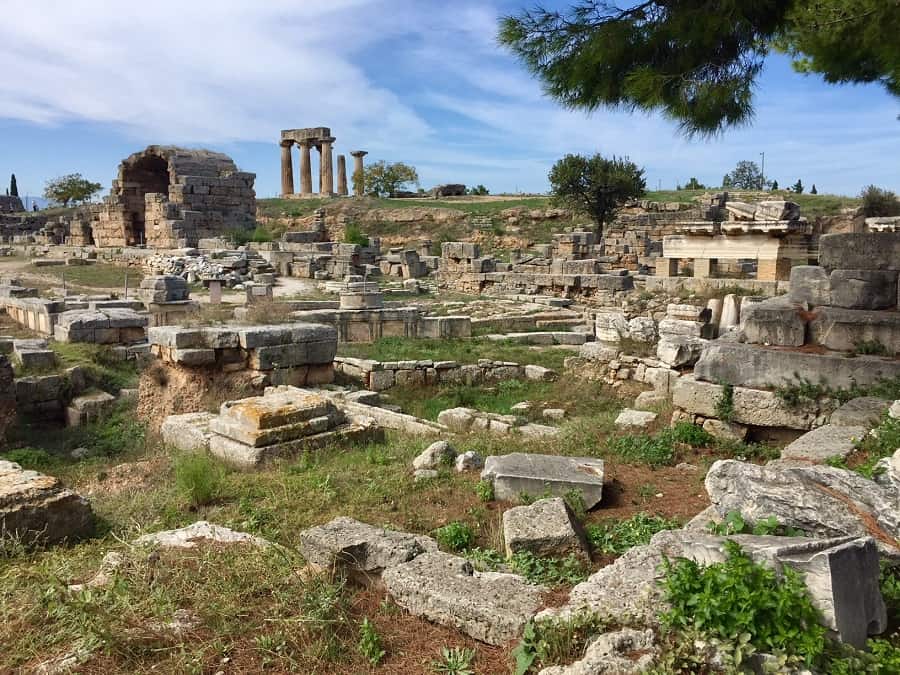
Apostle Paul
When a new story emerged about how the Universe works, the city changed in a generation or two. The apostle Paul brought his message of Christianity to Ancient Korinthos in about 50 AD. Saint Paul lived there, preached there, and sent letters to the Corinthians after he left there, because he believed they indulged in earthly comforts a little too much.
At the bema, Saint Paul explained love as he understood it. He asked people to renounce the god of the ocean, the goddess of victory, and on and on. He urged them to adopt a monotheistic belief about the trinity and the tripartite nature of man created by the love he tried to explain.
Now on the bema, there is a message from the Bible’s New Testament chiseled into rock by modern-day believers.
“For this slight momentary affliction is preparing for us an eternal weight of glory beyond all comparison.”
– 2 Corinthians 4:17
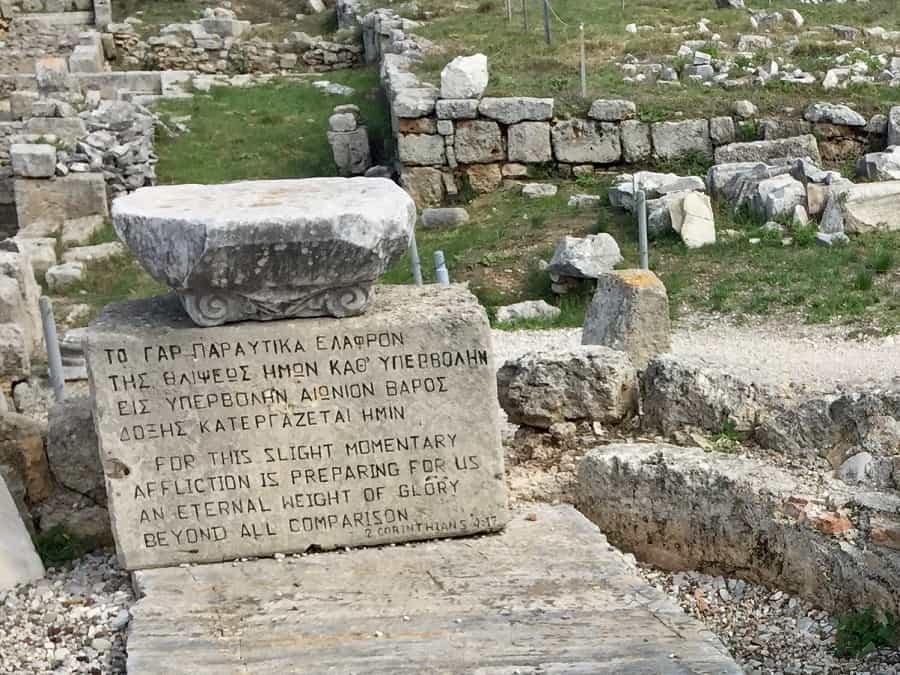
We had a beautiful visit. I can still see the clear and sharp blue sky against The Temple of Apollo; I remember how the cool early autumn breeze mixed with the warm sun; I can feel the uneven ground with rocky ruins and compacted earth beneath my feet.
The most wonderful feeling I recall is how the energy of the place captured humanity’s attempt to explain hope and love. That feeling, through the most basic understanding of early Christian and ancient Greek histories is a special gift to modern-day people like me, who are lucky enough to experience this site on a peaceful afternoon.
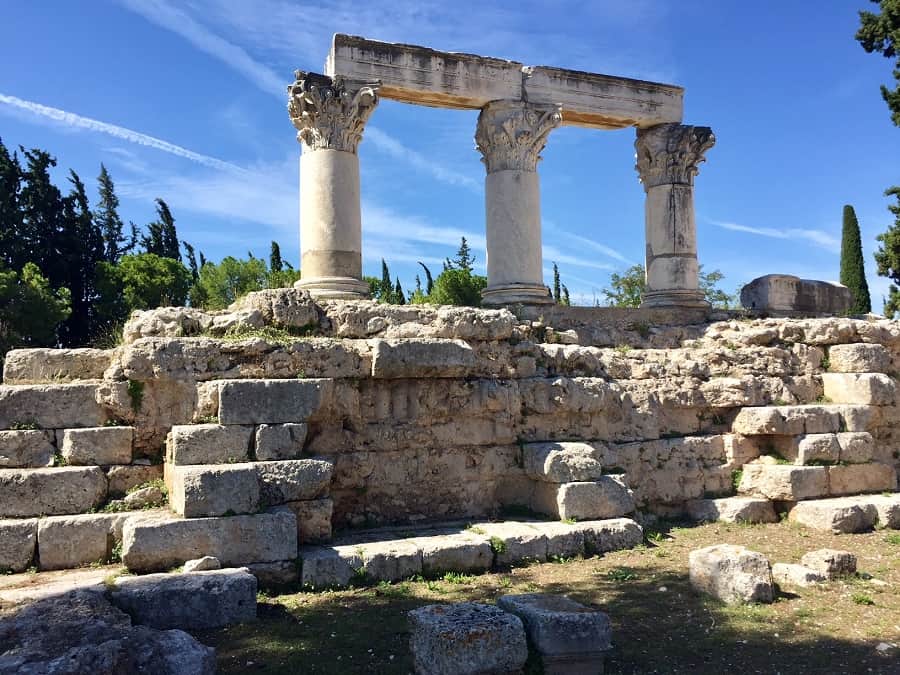
Getting there by public bus
We took the pubic bus to get to Greek ruins at Corinth, and it was a small challenge to find the bus stop and schedule. So here, just for you, dear reader, we show you the way.
The bus stop is not on Google maps, so look for the signs pictured below at the corner of Antistaseos and Aratou.
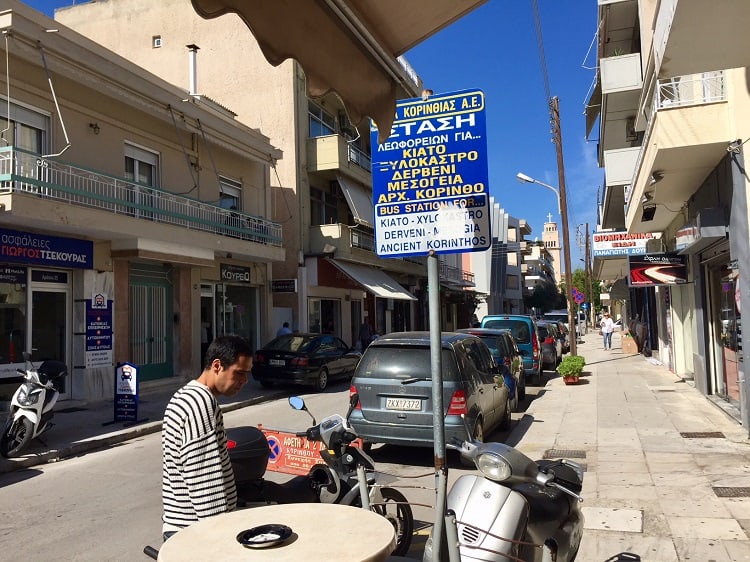
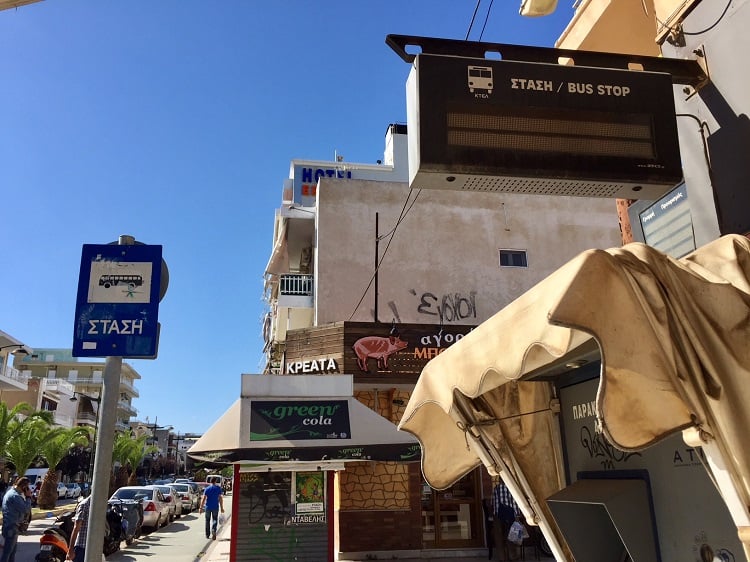
There will be an attendant there who sells tickets for about $2 – and they only sell one way at a time. The attendant will guide you onto the right bus.
The buses look like tour buses, but if they have digitized destinations in the front window (in Greek only), you know it’s a public bus. The few times we used the public bus (we also went to the canal via public bus), the attendant spoke basic English.
On the return, go to where you were dropped off and this time you’ll buy the ticket from the driver.
Tip: Make sure you ask when the last bus is scheduled from the ruins back to the city. For example on Sundays, it’s early – 2:30 p.m.
Admission, hours
Admission is 8 euros. There are half-price admissions for certain groups of people. And, there are also free admission days, but be aware, those days will draw more people. Hours vary by season.
The site had many tourists during our trip – all from tour buses. We were the only tourists to show up by public bus.
That said, the grounds are so expansive that you can stand in one area of ruins and just wait for people to mosey along, and have a corner to yourself.
Visit the official site for pricing and hours.
Acrocorinth, a separate site
No public buses go to Acrocorinth, a medieval fortress atop the mountain pictured below. That site was also used by Greeks and Romans, and others. You either walk about an hour uphill or take a taxi. We did not go, so I don’t know what the taxi would cost.
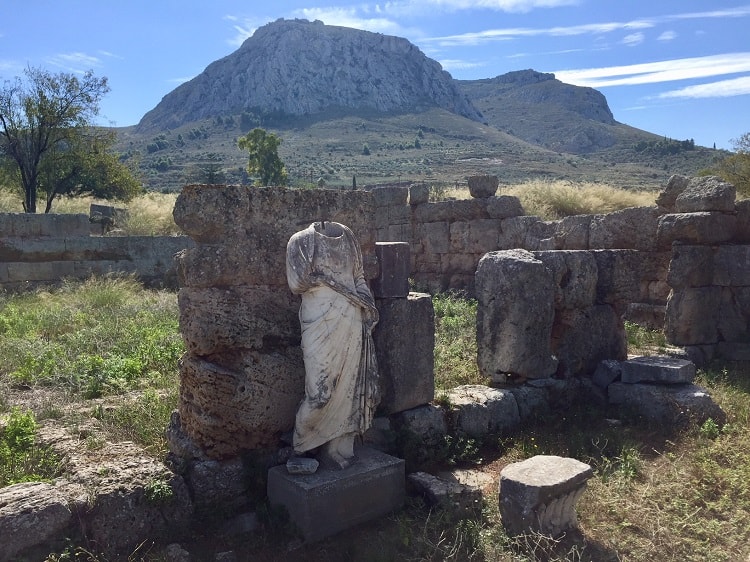
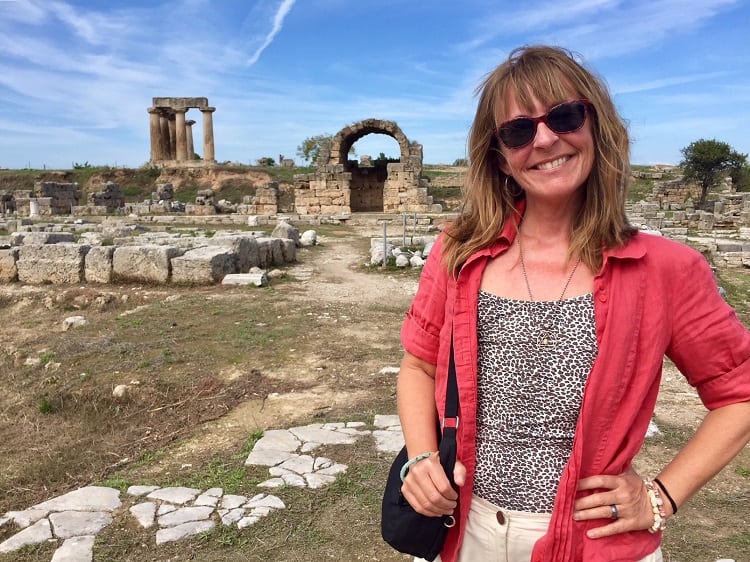
The site still is considered an active archeological site today, although we didn’t see any active digs when we were there.
This post was updated November 2019.

I am surprised for the inspiration you felt in this place. Of all Greek ruins, Corinto is the least I admire. But ”tot capita tot sententiae”. Lovely description anyway, Ellen copyright